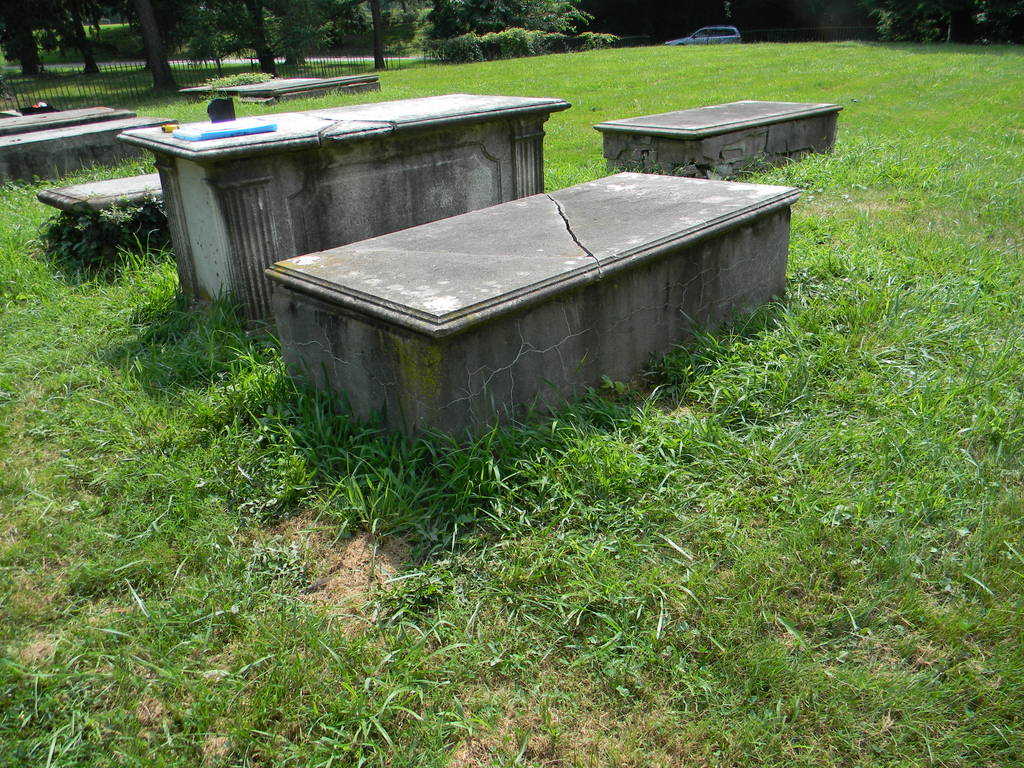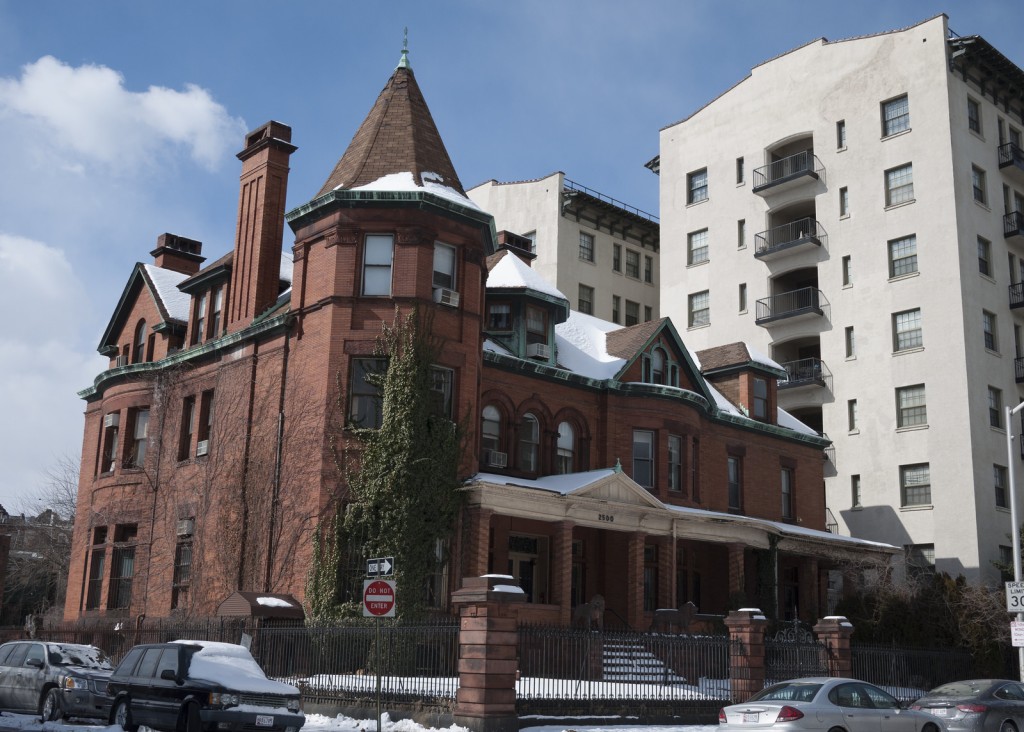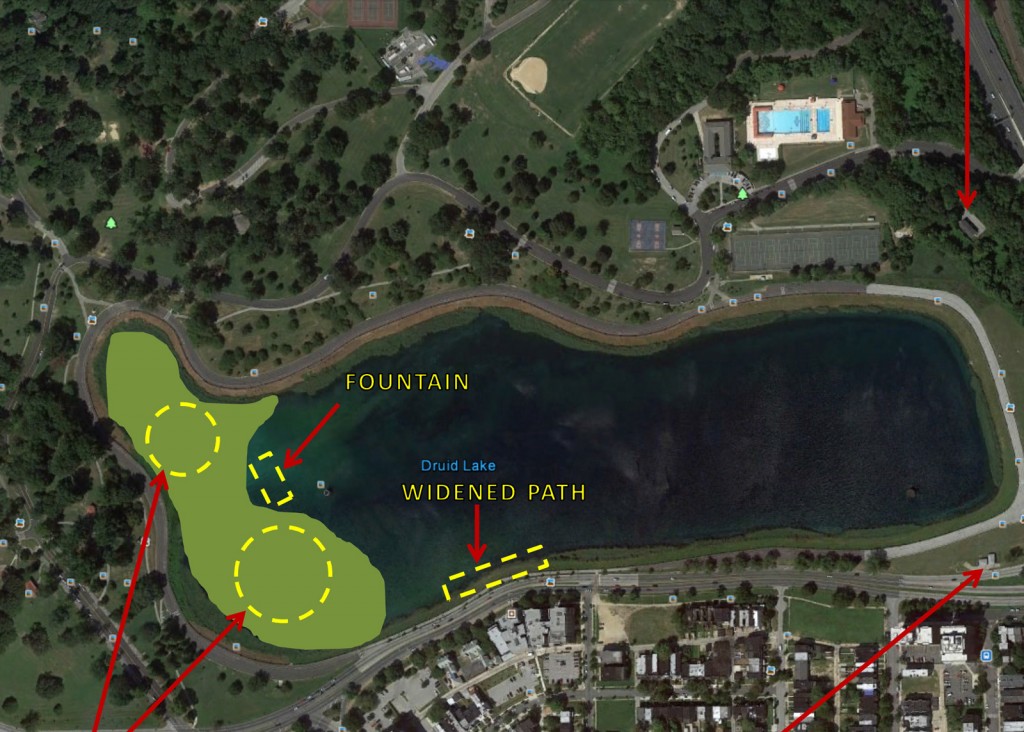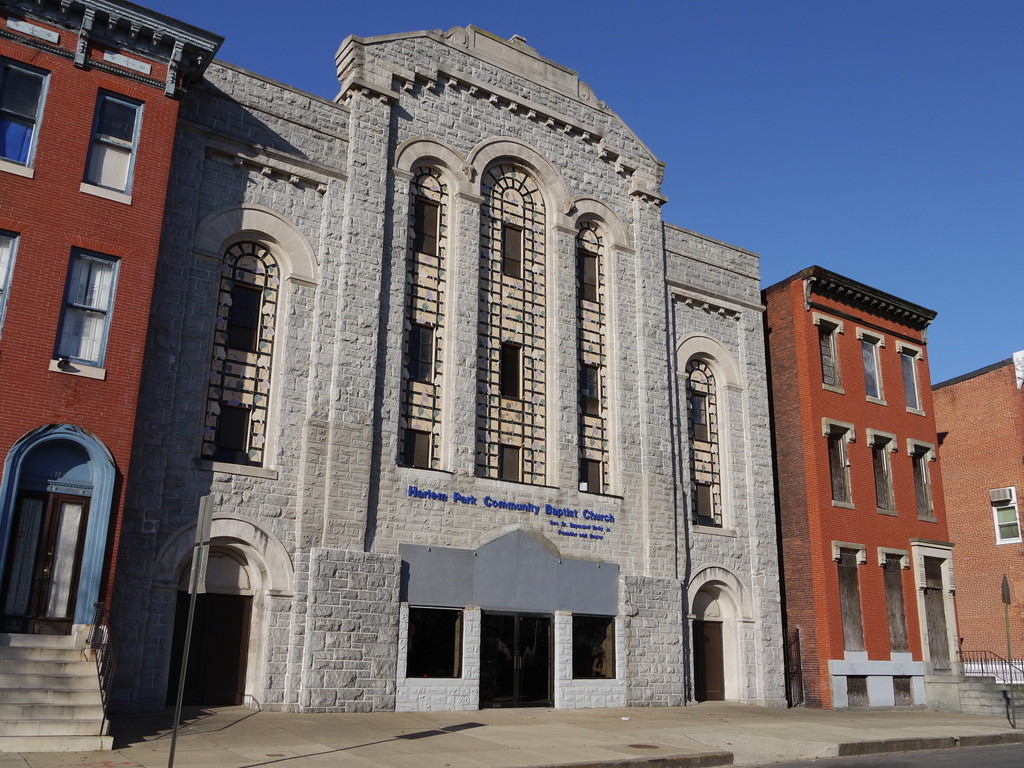Overview
The former Harlem Theatre on North Gilmor Street has been used as the Harlem Park Community Baptist Church since the 1970s. In recent years, unfortunately, the small congregation has struggled to find the resources to maintain the building. Issues such as a leaky roof and antiquated heating and cooling systems limit the use of the building and could contribute to significant deterioration if not addressed in the long-term.
Location
614 N. Gilmor Street, Baltimore, MD 21217
Our Approach
Through our partnerships with the Harlem Park Neighborhood Council, the Parks & People Foundation and the Friends of West Baltimore Squares, Baltimore Heritage has been an advocate for reinvestment in and around Harlem Park. The former Harlem Park Theatre is a unique opportunity for a private or nonprofit partner with the resources and vision to rehabilitate the structure and restore the building to its role as a important asset to West Baltimore residents.
History
Construction on this Romanesque-style building on Gilmore Street began in the summer of 1902. The building had a Port Deposit granite edifice and was considered aesthetically modern at the time of construction, designed to be an ornament in the neighborhood.
The new Methodist Episcopal Church was a short-lived venture marred by two destructive fires that led to its eventual abandonment. On December 22, 1908, the building was almost destroyed in a fire. Repairs were completed to the point where the congregation could continue to use the building until a more severe fire in 1924. On April 3, a fire destroyed the church, and the building was abandoned. This was also the period when the demographics of the neighborhood were shifting from predominately white to predominately African-American. The Methodist Episcopal Church was a predominately white congregation, so the change in demographics may have impacted the decision to abandon the church.
In 1928, the title for the church was officially transferred to Emanuel M. Davidove and Harry H. Goldberg, who resold the property to their company the Fidelity Amusement Corporation, formed for the purpose of building “a 1,500 seat motion picture theatre for Negroes to be known as Harlem Theatre.” The company hired architect Theodore Wells Pietsch, a notable Baltimore architect who also designed Eastern High School and the Broadway Pier. Pietsch took the property’s history into consideration when designing the new building: the theatre was made fireproof through the use of steel and concrete, and a fire extinguishing system was also included in the building’s design.
Like the church it replaced, the theater was designed as an ornament and a spectacle. The building’s decorative theme, inspired by Spanish architecture, was considered the most elaborate on the East Coast, and the theatre was promoted as “the best illuminated building in Baltimore.” The bright, decorative facade included a 65-foot marquee with 900 50-watt light bulbs to illuminate the sidewalk underneath, as well as “tremendous electric signs” around the marquee and a forty-foot high sign that could be seen from two miles away.
By the mid-1970s, the Harlem Theatre was closed. In 1975, it was purchased by Reverend Raymond Kelley, Jr. with the intention of turning it into the Harlem Park Community Baptist Church. Refurbishment included replacement of theatre seats with pews, and removal of the marquee. On July 6, 1975, the new church was dedicated. The building continues to be used by the congregation of the Harlem Park Community Baptist Church today.
Adapted from: Elise Hoffman, “Harlem Theatre,” Explore Baltimore Heritage.
Last Updated: December 8, 2014





